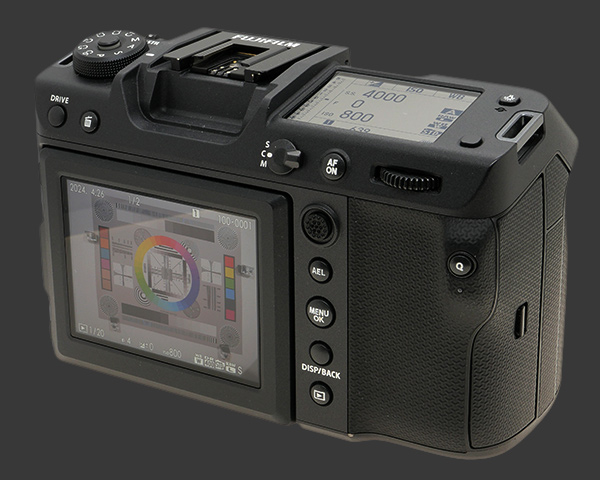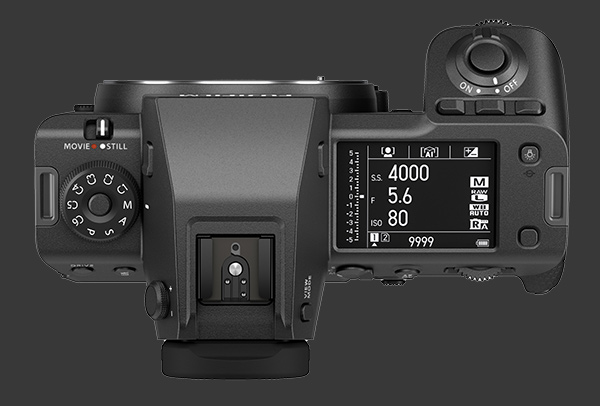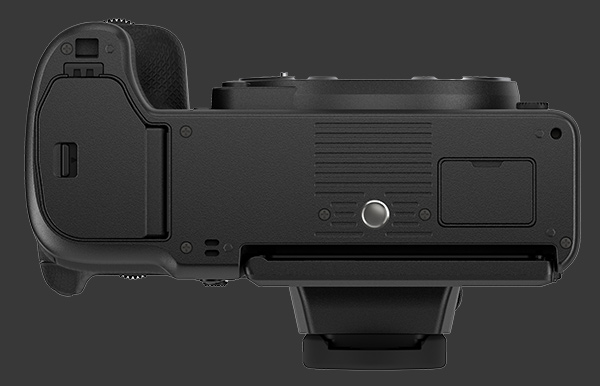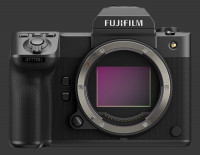Fujifilm GFX100 II Review
Fujifilm GFX100 II Introduction
The Fuji GFX100 II is the newest Medium-Format Digital Camera. It is build around a 0.8X crop second-generation sensor with 102 megapixels and extreme dynamic-range. The sensor is mounted on a class-leading 5-axis image-stabilization system that provides up to 8-stops of shake compensation. This is the best performance for any IBIS system to date, only matched by a handful of cameras.
Fujifilm initially rolled out their 102 MP sensor four years ago in the enormous yet ground-breaking GFX100. The new GFX100 II packs substantial improvements in a body that is much smaller and 40% lighter. These cameras and the intermediate GFX100S offer the maximum resolution available.
Medium-Format photography is highly-specialized photography, typically used to make enormous prints on site or in a studio. Their bulk makes them not suitable for street and travel photography. The output size is a problem for action and sport photography too, particularly due to the high throughput required. Consequently, significantly fewer lenses are made for Medium-Format compared to small sensor sizes.
The Fujifilm GFX100 II has a very modern design that is unique to the GFX100-series but model boasts some major differences. Most notable this camera uses a detachable EVF that provides extra versatility. The viewfinder itself is a superb 9 megapixels 0.64" EVF with 1X magnification, 100% coverage and an essential Eye-Start Sensor.
All professional digital cameras have very feature-sets. The GFX100 II delivers in this regards with a huge exposure-latitude, bulb mode, an interval timer, multiple exposure, extensive bracketing and sophisticated film simulation. It can capture 102 megapixels images at 8 FPS and is capable of recording 8K video. As one expects, this camera is fully weatherproof, freezeproof to -10C and boasts dual memory-card slots. Unfortunately these are asymmetric, having on CF Express Type B and one SDXC. Maximum speeds and buffer depth is only available when using the CF Express slot.

This digital camera review analyses the usability, performance and image quality of the Fujifilm GFX100 II.
Fujifilm GFX100 II Features
Sensor
- 102 Megapixels CMOS sensor
- No Anti-Alias filter
- 0.8X Crop-Factor
- 4:3 Aspect ratio
- Builtin Image-Stabilization
- 5-Axis
- 8 Stops Efficiency
- 400 MP Super-Resolution
- Variable Dynamic Range
- Selectable 100%, 200% or 400%
- Dynamic Range Priority, 2 levels
- On-Sensor Phase-Detect
- Fuji GF lens mount
- Dust-Reduction
Exposure
- ISO 80 to 12800 sensitivity range, 1/3 EV steps
- ISO 40, 25600 - 102400 expansion, 1 EV steps
- Auto ISO, Selectable 200-12800 Max
- ISO Bracketing, 3 frames, 1/3-1 EV steps
- 1/4000-60s Mechanical Shutter, 1/3 EV steps
- 1/32000-60s Electronic Shutter, 1/3 EV steps
- 60s-60m Mechanical Shutter, 1 EV steps
- Mechanical Bulb exposure, maximum 1 hour
- Optional Electronic Front Curtain Shutter-Release
- Standard PASM Exposure Modes, plus Bulb
- Metering Modes: Multi-Segment, Center-Weighed, Average and Spot
- Exposure-Compensation, ±5, 1/3 EV increments
- AEB, 2-9 frames, 1/3-3 EV increments
- Dynamic-Range Bracketing, 3 frames
Image Parameters
- White-Balance Control:
- Auto: Standard, White and Ambiance Priority
- Preset: Daylight, Shade, 3-Types Fluorescents, Incandescent and Underwater
- Kelvin: 2500-10,000K, 100K steps
- Custom: 3 Memories
- Fine-Tuning: 2 axis, 19 steps
- Bracketing: 3 frames, 3 steps
- Film Simulation: Provia, Velvia, Astia, Classic Chrome, Reala Ace, Pro Negative Hi, Pro Negative Standard, Classic Negative, Nostalgic Negative, Eterna, Eterna Bleach Bypass, Across, Monochrome and Sepia
- Optional Color Chrome Effect, 2 levels
- Optional Blue Chrome Effect, 2 levels
- Optional Skin Smoothing Effect, 2 levels
- Optional Filters for Across and B&W, 3 colors
- Film Simulation Bracketing, 3 frames
- Adjustable Color, Sharpness, Noise Reduction, 9 levels each
- Adjustable Highlight Tone and Shadow Tone, 13 levels each
- Optional Lens Modulation Optimizer
- Optional Long-Shutter Noise-Reduction
Output Processing
- 3:2, 16:9, 1:1, 65:24, 5:4 and 7:6 aspect-ratios
- JPEG, HEIF, RAW, RAW+JPEG, RAW+HEIF output
- 3 JPEG Compression levels
- 16-Bit Uncompressed RAW
- 14-Bit Uncompressed, Lossless or Lossy RAW
- sRGB or AdobeRGB color-space
Focus
- Single-Shot, Continuous or MF modes
- Manual-Focus Assist:
- Electronic Magnification
- Focus Peaking, 6 colors modes
- Digital Split-Image
- Digital Microprism
- Single-Point6 Sizes around 425 or 117 points, Zone3 Sizes around 117 points or Wide AF-Area
- Face Detect: Face, Auto Eye, Left Eye, Right Eye
- Subject Detect: Animal, Bird, Car, Moto, Airplane and Train
- Focus Bracketing:
- Interval: 0-10s
- Automatic by focus range
- Manual: 1-999 Frames, 10 steps
- Optional DMF mode
- Optional Pre-AF mode
- Optional Focus Check
- Optional AF Range Limiter
- Optional AF-Illuminator
- Fly-By-Wire focus-ring on all current lenses
Drive
- 8 FPS Continuous Drive
- 1000+ JPEG
- 302 Lossless RAW
- 75 Lossless RAW + JPEG
- 5 FPS Continuous Drive
- 1000+ JPEG
- 1000+ Lossless RAW
- 152 Lossless RAW + JPEG
- 2 FPS Continuous Drive, 1000+ Frames
- Interval Timer:
- Interval: 1s-24h
- Frames: 1-999 or Infinite
- Delay: 0m-24h
- Optional Exposure Smoothing
- Multiple-Exposure, 2 frames
- Self-timer, 2s or 10s
- Optional Self-Timer Auto-Reset
Video
- Cinema 8K: 8192 x 4320 @ 24 FPS
- Standard 8K: 7680 x 4320, @ 30 FPS
- Wide 8K: 8192 x 2968 @ 24 FPS
- Wide 5.8K: 55824 x 2476 @ 30 FPS
- Cinema 5.4K: 5440 x 2868 @ 30 FPS
- 4.8K: 4776 x 3184 @ 24 FPS
- 4.8K: 4776 x 2688 @ 30 FPS
- Cinema 4K 4096 x 2160 @ 60 FPS
- Standard 4K 3840 x 2160 @ 60 FPS
- Cinema HD: 2024 x 1080 @ 120 FPS
- Full HD: 1920 x 1080 @ 120 FPS
- Selectable Bit-Rate: 50-720 Mbps
Display & Viewfinder
- Optional 0.64" EVF:
- 9.4 Megapixels
- 1X Magnification
- 100% Coverage
- Eye-Start sensor
- 47° Angle-of-View
- Optional EVF Tilt and Rotate Adapter
- 3.2" Tilting Touchscreen LCD, 2.4 Megapixel
- Status Screen:
- 2" Monochrome LCD
- 320x219 Pixels
- 4:3 Aspect Ratio
- Black or White background
- Digital Level, 2-axis
- Depth-Of-Field Preview
- Optional Live-Histogram
- Optional Framing-Guides, 3 types
Misc
- Dual Control-Dials, both clickable
- Standard Exposure Mode dial
- 8-Way Joystick, Focus and Menu
- 10 Customizable Buttons
- Hot-Shoe & Sync-Port
- First or Second curtain sync
- Manual
- Hot-Shoe Only: TTL Flash mode
- 3.5mm Mini-Jack:
- Stereo audio input
- Wired-Remote
- HDMI Type-A connector
- USB 3.2 Type-C connectivity
- Gigabit Ethernet connector
- Wifi 802.11ac
- Bluetooth 4.2 LE
- CFExpress Type B slot
- SDXC UHS-II slot
- Proprietary Lithium-Ion battery
- Internal USB-C charging
Fujifilm GFX100 II Capability - What can it do?
As a high-end professional digital camera, the Fujifilm GFX100 II technically has a complete feature-set than can handle every type of photography. The two main points to consider are the availability of lenses and the bulk of the GFX system. Fujifilm lenses made for the G-mount span focal-lengths from 20 to 250mm. Third-party makers produce some wider manual lenses, up to 15mm. There are Tilt-Shift lenses in the lineup but the only true macro is a third-party lens. Super-Telephoto lenses would be too large for most uses. Travel and street photography are also less practical with this camera due to the size and weight.
The 102 megapixels Medium-Format sensor of the GFX100 II captures sufficient resolution to produce some extremely large prints. Even a 60" x 45" would look completely sharp up close. There is enough resolution to print murals and billboards which are seen from further away. The expansive dynamic-range of this camera ensures rich gradations, proving extra leeway when processing files for print.
This camera supports a huge exposure latitude. Its standard ISO 80-25600 sensitivity range, expandable to 40-102400, combined with 1/32,000s-60m shutter-speed range can freeze fast action in bright light as easily as it can handle star trails in virtual darkness. Its 16-bit files capture shadow details better than any other camera..

Fujifilm are experts at color science. They offer a high number of Film Simulation modes based on classic Fuji film. For the undecided, there is even Virtual Bracketing which takes one shot and renders it as 3 images, each one using a different user-selected Film Simulation. There are now 14 to choose from and each can be tuned to taste. White-Balance control is also quite complete.
There are several bracketing options in this camera: AEB, ISO and Dynamic-Range. ISO Bracketing captures 3 frames with step sizes of 1/3-1 EV. Dynamic-Range Bracketing captures images with 100%, 200% and 400% dynamic-range, which is actually only available between ISO 320 and 12800. Exposure Bracketing is the most sophisticated of any camera to date. The GFX100 II can capture between 2 and 9 frames using the current exposure as base, center or limit. It allows any step size from 1/3 to 3 EV. Frames can be captured continuously or individually and in any of 4 possible orderings!
New to the Fujifilm GFX100 II are two Pixel-Shift modes. These rely on the IBIS mechanism to produce an image with either more color definition plus, optionally, quadruple the resolution. The camera restricts sensitivity to the ISO 80-1600 range in these modes. Increased color-accuracy is produced by taking 4 frames shifted by one quarter pixel so that the Bayer filter reads every primary color at each photosite. Images of a whopping 400 megapixels are captured using 16 frames shifted by a half-pixel in each direction. Pixel-Shift captures RAW files that must be processed using Fujifilm software. The sheer volume of data probably explains why this camera does not feature builtin HDR which requires similar processing to combine multiple images.
Even with such high-resolution, the GFX100 II reaches a fast 8 FPS continuous drive. This is fast enough to capture variations yet modern cameras designed for action photography can shoot 15X faster. Of course, those capture much smaller images. There are quite a few drive modes on this camera, including extensive bracketing modes, an Interval Timer and Focus Bracketing, which is extremely difficult to perform manually with any level of precision
Time allocated was too brief to fully evaluate video features of the GFX100 II. The camera sports plenty of video capabilities headlined by its ability to capture Cinema 8K video at 24 FPS and standard 8K at 30 FPS. The also supports a variety of unusual resolutions and aspect-ratios. These resolutions do not match any existing display and would be used mostly to process into a lower resolution format.
Fujifilm GFX100 II Usability - How easy is it to use?
This Medium-Format Mirrorless Digital Camera is designed to look like a modern Full-Frame DSLR with some unique modifications. It is about the same size as a professional DSLR, even though it features a larger sensor. Its handling and controls are familiar with one exception detailed further down in this review.
This sizable camera feels heavy and solid throughout. Its deep sculpted hand-grip has an indentation to rest on a finger. A standard two-stage shutter-release is angled at about 45° for easy reach with the index finger. It has a good amount of resistance and travel to the halfway point. Around it, there is rotating power switch with a strong detent that prevents turning on the camera accidentally.

Just below the shutter-release, the front control-dial is visible. It has nice distinct detents and a ribbed texture to enhance traction which makes it easy to use while wearing gloves. The control-dial is clickable. That action is used to cycle over multiple parameters which is necessary in Manual mode. How parameters are distributed between dials is configurable from the Settings menu. A row of three indistinguishable buttons is found above the shutter-release. These can be configured to access frequent parameters among 45 possibilities! It is possible to assign ISO to one button and distribute Aperture and Shutter-Speed to control-dials to achieve a modeless interface which simplifies handling.
There are two rather flat buttons tucked between the grip and the lens mount. These can be assigned to any of the same 45 functions as other buttons. The lens release is found further down. Having it on this side is optimal for changing lenses, since it is possible to detach the lens while still holding onto the grip.

The top of the camera, shown above with the optional EVF unit attached, is dominated by a 2" monochrome LCD. This Status Display is extremely customizable. The EC scale can be toggled on or off, plus two columns of information are completely customizable. The three icons at the top correspond to the feature selected for each button behind the shutter-release. The above display can be swapped for a rendering of ISO and Shutter-Speed dials or show a Live-Histogram instead. A small button toggles the white back-light of the Status Display. The similar unlabeled button is customizable.
On the opposite side of the top plate, there is an Exposure Mode dial. It offers the standard PASM modes plus no less than 6 custom modes, the most of any camera! In the center of the dial, there is button to lock the Mode dial in place. Press it once to lock, another time to unlock. There are strong detents on the Mode Dial, so it is unlikely to turn accidentally. The EVF unit has a hot-shoe and there is also one underneath for when the EVF is not mounted. This could be useful with the camera in a video rig that has its down viewfinder or display.

The back of the camera, seen here without the EVF unit attached, features a large 3.2" LCD touchscreen with a 2.4 megapixels resolution. This one of the larger screens yet it looks small on the back of this sizable camera. The LCD is mounted on a sturdy double-hinge that lets it tilt down or up 1" away from the camera to minimize chance of the EVF blocking its view. The display is not very bright but it has an effective anti-reflection coating.
Along the right edge of the rear LCD, there is a column of buttons with an 8-way joystick at the top. The joystick controls the focusing point and is usable in MF mode too, since it determines which area is magnified during MF Assist. There is no 4-way controller on the GFX100 II, similar to several other Fujifilm cameras, so the joystick is also used for menu navigation.
Below the joystick, there is an AEL button that can be customized to perform other functions. One button down, there is the Menu/OK button which is used to enter the menu system and confirm changes. Below it, the DISP/BACK button cycles over display modes are exits an open menu. The button at the button toggles between Capture and Playback modes.
A curiously placed Q button to near the outer edge of the camera activates the Fujifilm Q menu. This iconic screen allows users to select up to 15 functions to be accessed without entering the full menu system. The is the only problematic button on the GFX. It easily gets press unintentionally while using the camera. A few more button are lined up with the top edge. Drive brings up a list of drive modes, Delete is used to prompt a file for deletion and AF On is customizable. By default it triggers the autofocus system.
To the left of the AF On button, there is a typical 3-way focus mode switch, only in an unusual location! On the right, one can see the rear control-dial which is clickable. By default, clicking this dial activates MF Assist, but this can be customized to invoke other functions. The two control-dials provide efficient control over exposure and can be setup in various ways. The factory settings are set to a modal interface that requires more careful usage than ideal.

The bottom of the camera shows a metal tripod mount, inline with the optical center of the sensor. This is the ideal placement for panoramic photography. A small flap held by pressure alone covers contacts for an optional battery grip. A relatively rigid plastic door covers the opening to the battery compartment. There is a thick rubber gasket on the inside of the door to provide protection against the elements. The proprietary Lithium-Ion battery is charged inside the camera, unfortunately forcing users to leave the camera out while charging. A camera this costly should really come with a dedicated battery charger. It is possible to purchase one separately though.
Ergonomics of the Fujifilm GFX100 II are generally quite good. While the camera is large and heavy, weighing over 1kg, its size leaves plenty of space for buttons and to hold on. The camera is highly configurable to ensure that most common settings can be accessed quickly. The only problematic control is the Q button that gets triggered all the time. Also, just like lenses for the X-mount, Fujifilm makes GFX lenses with detents that are too soft. It is very easy to accidentally change the aperture, unless one uses the locked C position, this giving up on the aperture-ring. This is unfortunate since one could otherwise set the aperture on the lens and leave control-dials to choose the Shutter-Speed and ISO sensitivity.
 |
Please Support Neocamera
All information on Neocamera is provided free of charge yet running this website is a huge endeavor. Purchases made via affiliate links found throughout the site help keep it running and up-to-date. There is no additional cost to you, so please consider buying via these links to our affilates:
Thank you for your support!
Fujifilm GFX100 II Highlights

Sensor-Size: 44 x 33mm

Actual size when viewed at 100 DPI
| 102 Megapixels Mirrorless | ISO 40-102400 |
| Fujifilm G Mount 0.8X FLM | Shutter 1/32000-3600s |
| 5-Axis Built-in Stabilization, 8-Stop Improvement | Full manual controls, including Manual Focus |
| 0.64" Optional EVF 9.4 Megapixels (1.00X) | Custom white-balance with 2 axis fine-tuning |
| Automatic Eye-Start sensor | Spot-Metering |
| 2 Axis Digital Level | Hot-Shoe & Sync-Port |
| Weatherproof down to -10C | Stereo audio input |
| Built-in Dust Reduction | Lithium-Ion Battery |
| 8 FPS Drive, 1000 Images | CF Express Type B, Secure Digital Extended Capacity |
| 8192x4320 @ 24 FPS Video Recording | |
| 3.2" LCD 2.4 Megapixels |
Updates
2025.11.13

Best Gifts for Photographers in 2025 by Budget
The annual Neocamera Photography Gift Guide updated to 2025. Find great gifts for photographers with any price budget.
2025.07.07

Stellar Photo Recovery Review
Review of Stellar Photo Recovery V12. This Windows and MacOS software can recover photos and videos in a huge number of formats from memory cards, USB drives, SSDs and HHDs.
2025.05.14

Huion Kamvas 13 Gen 3 Review
In-Depth review of the Huion Kamvas 13 Gen 3 Pen Display Tablet for photographers and graphic artists.
2025.01.18

Fujifilm GFX 2025 Lens Roundup
Lens Review roundup of Fujifilm GFX Medium-Format lenses. Quality, performance and handling of the GF20-35mm F/4R WR, GF30mm F/3.5 Tilt-Shift and the GF55mm F/1.7.
2024.11.18

Best 2024 Photography Gifts for Every Budget
Great gifts for photographers and photo enthusiasts selected for every budget among the best products of 2024.
2024.08.07

Eye Protection Tips for Professional Photographers
The four main considerations for professional photographers regarding eyewear.
2024.07.14

Fujifilm X100VI Review
Flagship fixed-lens compact digital camera with a 40 MP sensor and Image-Stabilization, a first for the series. Retro design featuring dual control-dials, plus direct ISO, Shutter-Speed and EC dials. Its hybrid viewfinder can switch between EVF and OVF mode.
2024.05.09

Fujifilm GFX100 II Review
Flagship 102 Megapixels Medium-Format Mirrorless Digital Camera with 8-Stop 5-Axis IBIS, 8 FPS Drive, 8K Video and 400 MP Super-Resolution capture in a weatherproof and freezeproof body with dual control-dials and dual memory-card slots.
2024.04.03

Fujifilm X-T5 Review
Newest Fujifilm flagship boasting a 40 MP APS-C sensor, 5-axis IBIS with 7-stop efficiency, 15 FPS continuous drive, 6.2K Video capture, dual control-dials and dual SDXC UHS-II slots in a sturdy weatherproof and freezeproof body.
2023.11.20

Best Digital Cameras of 2023
Find out which are the Best Digital Cameras of 2023. All the new Mirrorless Digital Cameras from entry-level to high-end professional.
2023.07.10

Fujifilm X-H2 Review
40 Megapixels APS-C Hybrid Mirrorless Digital Camera with 7-stop IBIS. Fastest shutter ever and 8K video capture. Large builtin EVF with 0.8X magnification and 5.8 MP, plus an Eye-Start Sensor. Packed with features and large number of controls in a weatherproof and freezeproof body.
2023.05.07

Sony FE 20-70mm F/4G Review
Review of the unique Sony FE 20-70mm F/4G lens. The optical zoom of this lens spans ultra-wide-angle and medium focal-length coverage, making it one of the most versatile Full-Frame lenses on the market.











